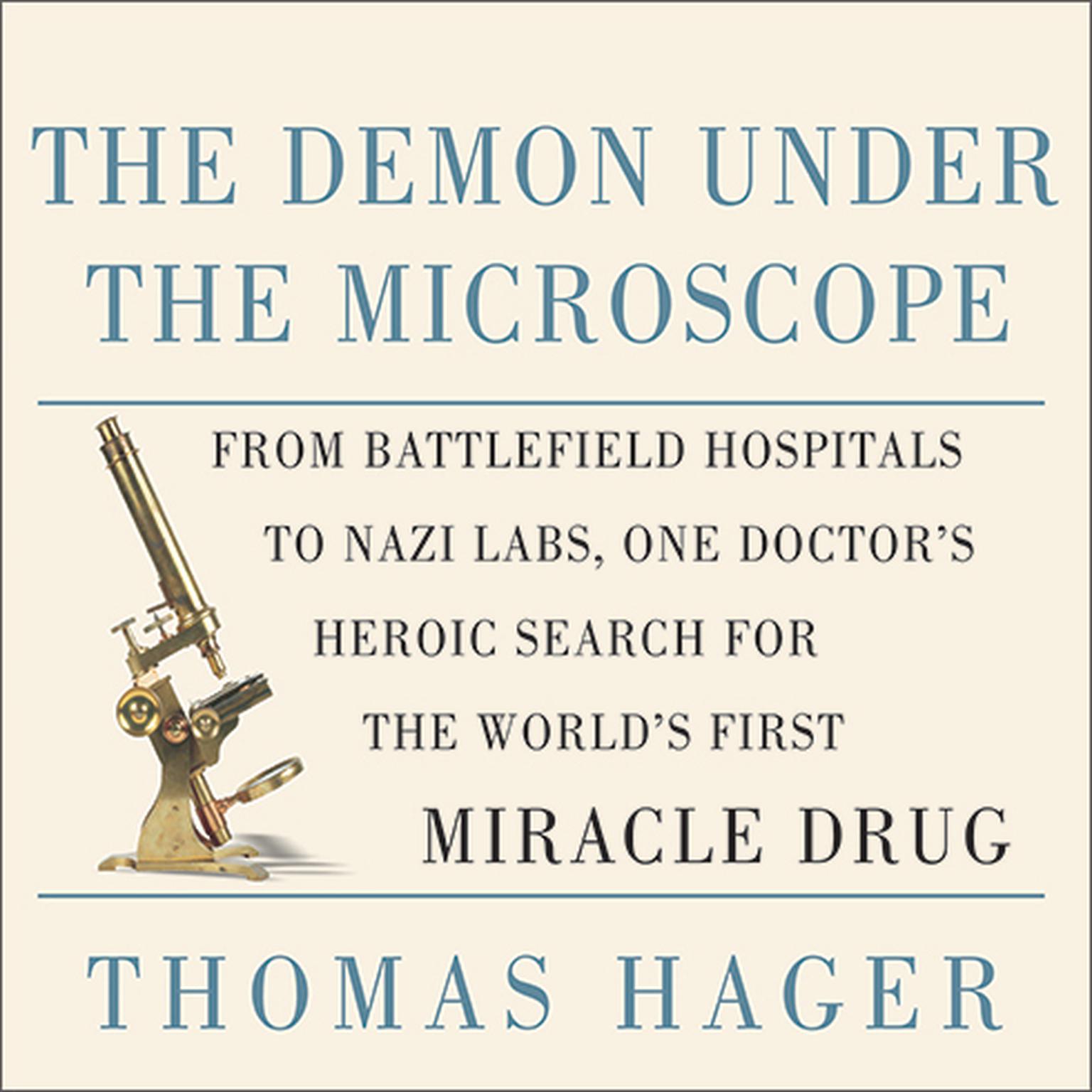Plot Summary
On the surface, The Demon under the Microscope: From Battlefield Hospitals to Nazi Labs, One Doctor’s Heroic Search for the World’s First Miracle Drug is the story of Nobel Laureate Gerhard Domagk and his development of antibacterial sulfonamides, usually known as sulfa drugs. Instead of just being a biography of Domagk, however, it is a look at the medical science behind treating bacterial infections. It covers the early days of germ theory and the beginning days of serum medicine. It is also about politics, military history and human compassion. It discusses the atmosphere, both scientifically and politically, in Germany from before the first World War until after the second.
Sulfa drugs may have been discovered by the Nazis, but they were instrumental in the Allied forces winning World War II. As the first antibiotic, sulfa drugs saved soldiers, children and political leaders, among them Winston Churchill and Franklin Roosevelt. The drugs changed the way new drugs were discovered or developed, as well as how they were approved and marketed. Sulfonamides literally launched the era of modern medicine.
Before sulfa drugs, scientists, researchers and doctors had no idea that man-made chemicals could possibly cure diseases. Instead, they used natural remedies to treat the symptoms of an illness and hoped it cleared up on its own. With the discovery that sulfonamides could cure bacterial infections, the possibility of eradicating disease suddenly seemed plausible.
Author Thomas Hager has written several books about historical figures in the health sciences. He is also regularly published in a number of popular and professional periodicals on topics related to health and science. Hager’s books include Aging Well, Force of Nature: The Life of Linus Pauling, Linus Pauling and the Chemistry of Life, Linus Pauling: Scientist and Peacemaker, The Demon under the Microscope: From Battlefield Hospitals to Nazi Labs, One Doctor’s Heroic Search for the World’s First Miracle Drug and The Alchemy of Air: A Jewish Genius, a Doomed Tycoon, and the Scientific Discovery that Fed the World but Fueled the Rise of Hitler.
“Very fascinating nonfiction book about the discovery and impact of antibiotics. I felt the historical aspects were fascinating and how it has changed things is amazing. I kept thinking about how life must have changed from right before my father was born to now. How scary it could have been to give birth or get any sort of infection in the early part of the 1900’s.”
—
Wonderbunny (4 out of 5 stars)
Publisher Summary
Fast-paced, suspenseful, and utterly satisfying, The Demon Under the Microscope is a sweeping history of the discovery of the first antibiotic and its dramatic effect on the world of medicine and beyond.
The Nazis discovered it. The Allies won the war with it. It conquered diseases, changed laws, and single-handedly launched the era of antibiotics. This incredible discovery was sulfa, the first antibiotic medication. In The Demon Under the Microscope Thomas Hager chronicles the dramatic history of the drug that shaped modern medicine.
Sulfa saved millions of lives—among them Winston Churchill and Franklin Delano Roosevelt, Jr.—but its real effects are even more far reaching. Sulfa changed the way new drugs were developed, approved and sold; transformed the way doctors treated patients; and ushered in the era of modern medicine. The very concept that chemicals created in a lab could cure disease revolutionized medicine, taking it from the treatment of symptoms and discomfort to the eradication of the root cause of illness.
A strange and vibrant story, The Demon Under the Microscope illuminates the colorful characters, corporate strategy, individual idealism, careful planning, lucky breaks, cynicism, heroism, greed, hard work, and the central, though mistaken, idea that brought sulfa to the world. This is a fascinating scientific tale with all the excitement and intrigue of a great suspense novel.
Download and start listening now!











